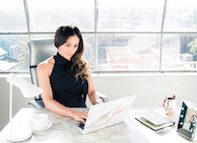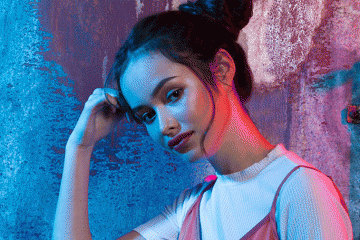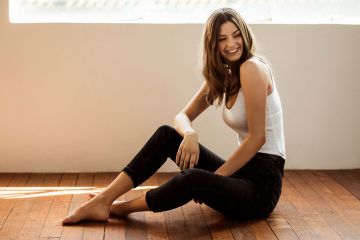The Novice's Guide to Product Photography
If a photo is worth a thousand words, a magnificent product picture is worth a thousand website gos to. Although I don't have data to back up that declaration (yet), product photography can be very beneficial to your ecommerce site technique.
To reach your target market participants that favor purchasing online, you likewise need to give your audience clear, attractive images of your items.
Yet product photography isn't as simple as pointing and also shooting. Even one of the most standard items require the correct devices, lights, and room to produce beautiful images that market shoppers right from the acquisition page.
6 Product Photography Tips ( as well as Examples) for Taking Pictures That Sell
Here are the ideas, instances, and supplies you'll need to efficiently picture as well as market your products in a manner that makes your site visitors and also leads wish to convert.
1. Do not hesitate to use your mobile phone's camera.
This is the part where I'm expected to persuade you to invest in a high-end, 50-megapixel (MP) video camera with a 100-millimeter screw-on lens. But I'm not mosting likely to do that.
If you currently have a electronic camera that fits this summary, capitalize on it. But for lots of kinds of products, it's completely appropriate to fire product images on a smartphone.
More recent smartphones flaunt powerful electronic camera lenses as well as setups that permit you to enhance your shots for the various types of light and atmospheres you might shoot in.
If you need extra persuading, simply check out Apple's Shot On An iPhone project as well as the images that have actually arised from it throughout the years such as this set:
2. Shoot from a tripod for photo consistency.
Before describing tripods, I'm obligated to start with a cardinal guideline: Do not prop your phone versus something strong to aim your lens towards the subject.

It's just also simple for this makeshift setup to glide about during the shoot as well as trigger inconsistencies in your pictures' look. If you relax your camera on, state, a pile of books, simply be sure this plan doesn't alter over the course of the shoot.
There's no damage in holding your video camera yourself when firing simply a couple of product pictures for your ecommerce site. But as your company grows, as well as you take extra pictures of more items, it can be challenging to standardize the product's orientation in each photo when shooting handheld.
To make certain uniformity across your products, you'll require a tripod. And also luckily, getting one isn't constantly the big, industrial-sized investment it utilized to be.
Right here are two types of tripods to take into consideration.
Traditional vs. Adaptable
This is a custom tripod-- there are conventional tripods available for both cameras and also smart devices.
A adaptable tripod can be manipulated in a number of methods. You can bend its legs and also place it on various surfaces to get the angle you require.
Mobile Grasp
There's usually a screw on the top of your tripod which attaches to your cam to hold it in place. The bottom of the majority of professional-grade electronic cameras has a screw hole just for this objective, however smart devices can utilize the adhering to adapter:
The adapter holds the sides of your smartphone and also can screw right into either kind of tripod, permitting you to run the video camera controls with the phone screen dealing with outside and towards you.
As soon Visual Campaign Creator as you determine which mount you'll need, establish it up before your product, as well as consider putting 3 items of tape on the ground to mark where you would love to keep each leg of your tripod over the course of the shoot.
3. Select all-natural light or synthetic light.
Never undervalue just how specific types of light can enhance (or prevent) your product photography. Remember, purchasers get the best check out an item in person, where they can see every little thing they need to before getting. The best lights plan aids you reveal those critical decision-making product attributes when all website site visitors have to go on is a photo.
A solitary lights setup could not help every product-- a lights arrangement that helps some products might weaken the appearance of others.
There are two kinds of light you can select as your primary light source: natural and artificial light.
All-natural Light
Natural light refers to sunshine-- simple as that. It's also known as "soft light" since the sunlight casts a larger, softer range of light than, state, a light radiating directly on the product. Ecommerce product shots prosper in all-natural light if:
The product is shot outside or meant to be used outside.
The product is utilized by, worn on, or shot with a individual ( individuals have a tendency to look better in all-natural light).You're attempting to highlight the product's environments, instead of specific attributes of the product.
Here's an example of a shot utilizing natural light:
Fabricated Light
Artificial light consists of candles, http://devinqhie985.trexgame.net/how-product-photography-can-benefit-your-ecommerce-store fire, as well as a lot more typically, light bulbs. It's also referred to as "hard light" due to the fact that it creates a smaller sized however much more concentrated light surface area. This kind of light caters to products with physical information that need to be highlighted to impress an on the internet customer.
As a general guideline, stick to just one type of light per photo-- natural or fabricated. Including all-natural light to an synthetically lit photo can soften a product that's suggested to festinate, and adding synthetic light to a naturally lit photo can sharpen a product that's suggested to look soft. You don't wish to get in your very own means.
4. Load or jump your light to soften darkness.
Whether you make use of all-natural light or synthetic light, you'll require to lessen the shadows that any type of potential hard light casts on the contrary end of a product.
There are 3 methods to do this:
Fill Light
Consist of an additional, less-intense source of light to supplement your major light. This extra light is called your fill light and also is utilized as a counterbalance to soften the all-natural shadow your major light generates behind an object.
To do this, put your fill light opposite your major light so your product sits in between both light sources.
Flashbulb Bounce Card
A bounce card, or reflector card, is a little card that " shows" or " jumps" the main light back onto the surface area below your product to reduce darkness.
Some bounce cards attach to the flashbulb of a specialist camera lens to diffuse the light from the video camera's flash. This card splashes a softer light onto the subject from over your set-- as opposed to right at it-- so you don't have long darkness trail behind the object you're shooting.
Standalone Bounce Card
If you're firing from a smartphone, a flashbulb bounce card isn't an alternative, because you do not have a physical flash you can affix it to. Instead, make your own standalone bounce card placed opposite your main light.
For beginners to product photography, this bounce card can properly replace your fill light, which counters the tough light from the camera flash or light that's dealing with towards the front of your product.
5. Utilize a sweep or picture mode to emphasize the product.
There isn't one ideal method to position your product, lights, as well as jump cards-- they can alter dramatically depending on your background. However don't pick a background based on what's most convenient to develop. Backgrounds must appear like just how you desire your purchasers to perceive your product when watching it online.
Think about initially whether you 'd such as a white background or a much more dynamic, real-world history. There's an easy means to achieve each one.
White Background: Move
For white histories, it's not as simple as setting up a table versus white drywall. Also smartphone video cameras can grab little imperfections on a white wall surface that you wouldn't observe with the naked eye. To record a excellent white background without corners or acnes, make use of a sweep.
A move is a huge bendable sheet of paper, whose lower function as the surface area under your product and after that contours up right into a white wall surface behind the product.
On video camera, the sweep's contour is unnoticeable, highlighting crucial product information as well as permitting the product to own every one of a website site visitor's attention.
Real-World History: Picture Mode
Dynamic, real-world backgrounds are very appealing when capturing products that have a particular usage or are being modeled by a person-- as you saw aware of the briefcase previously in this overview.
But, it's very easy for a real-world history to steal the focus of the photo, making it vague which thing in the photo you're really marketing.
Give your product depth as well as focus with portrait mode, a image setting on most specialist cams, as well as also readily available on many brand-new smartphones. This setting blurs the history so the context of the product is clear yet not competing against the product itself.
Below is a very outstanding photo of a HubSpot pen absorbed portrait mode on a Google Pixel 2 (I took this picture myself). You can tell the pen remains on a desk with a computer system behind it, but the pen is still the focal point for viewers:
6. Shoot a variety of photos.
My last ecommerce photography idea to you is to not stop at one photo per product. Equally as your customers look, hold, utilize, and also also try out goods in a store, your site ought to fire a selection of pictures to simulate this extremely experience.
If you're firing clothes, for example, record the garment of garments alone-- that is, expanded on a white surface area-- in addition to on a mannequin whose color contrasts the shade of the product.
After that, for extra photos, have the apparel modeled on a person, enabling you to take images of the product from the person's various positions and also angles.
Product Photography Set-Up
Next off, allow's summarize what we just obtained-- right here's a list of quick product photography set up tips that you can describe and also share on your group:
• Choose a cam-- whether that means using your mobile phone.

• Get a tripod that works for your camera of selection.
• Choose natural or man-made illumination-- consider which option is best for your product as well as setting.
• Determine whether you'll fill up or jump light.• Select sweep or picture setting.
• Take several various photos to offer your audiences range.
Get Started With Your Product Photography
